DECOMPOSITIONS #1
Event score cards, shaggy mane mushroom ink on manuscript paper
Invitation:
Please take one
You are invited to perform the piece
in your own time
in your own way
in your own space
When you are complete,
Please compost
DECOMPOSITIONS #1 is an artistic response to Soundings: An Exhibition in Five Parts. It is a modular art work, both an acrostic poem in 16 parts which was generated by the title, and 16 individual event scores. The original event scores were available at the Morris and Helen Belkin Art Gallery during the final week of Soundings’ exhibition on the UBC campus, and I invited visitors to take one and perform it in their own way, extending some of the concepts of the show beyond the gallery space. My only concrete request was that the scores be composted after performance and that deconstruction be enacted in a literal and ecological sense.
The decompositions project was directly influenced by a number of works in the show, specifically Candice Hopkins and Dylan Robinson’s curatorial score, Tania Willard’s Surrounded/Surrounding, Ogima Mikana’s Never Stuck, and Germaine Koh’s Crowd Shyness. It was also influenced by the intermedial artworks of the Fluxus movement and their conceptual and community based projects in the 1960s and 70s. As an artist, I continually seek to build participatory and collaborative relationships, deconstructing boundaries between categories such as: creator, performer, spectator, and work. Event scores like this have the capacity to challenge institutions and structural power dynamics in interesting ways. Here, I further invite the performer to incorporate movement and contemplative action and explicitly reframe nature as a primary actor in several of the event scores.
The piece was written on a single 18”x12” sheet of archive quality manuscript paper printed with 16 staves. I divided this sheet into 16 blocks, 4 across and 4 down, a visual reference to 4/4 meter or “common time” in a musical score. DECOMPOSITIONS #1 features paired lines of 10-12 syllables and some degree of thematic recurrence, quotation, and allusion to other works. The length and type of language were largely dictated by the dimensions of the paper, and the size of the characters was dictated by the nature of the mushroom ink. This ink, made from shaggy mane mushrooms (coprinus comatus) was applied to the score with a bird feather quill and required lots of time and patience to work with. In a very real way, the materials of this work therefore generated its content.
Shaggy mane mushrooms are edible and can be found throughout North America. I have encountered them more than once on the UBC campus, once on the Main Mall not far from the Belkin Gallery. They are part of the ink cap family, which means that they start to auto-digest or “ink” within a few hours of either releasing their spores or being picked. They exist in “gregarious” habitats, so a whole community of mushrooms springs from a single root system or rhizome. Interestingly, they often pop up along pathways or disturbed earth, which indicates that they respond to some extent to human presence. My mushroom ink is intended, both literally and symbolically, to eventually rot through the paper, as some types of mushrooms are nature’s most effective way of breaking down the fibrous matter in trees (or paper) so they can eventually be further decomposed by micro-organisms in the soil.
For those of you who are encountering this work in virtual rather than physical space, the invitation remains the same. Please pick one or more scores that appeal to you and perform them as you like. Although you won’t have a physical score to compost, the creative spores are nonetheless effectively spread as you continue to rethink the ways you might move through the world as a creative artist.
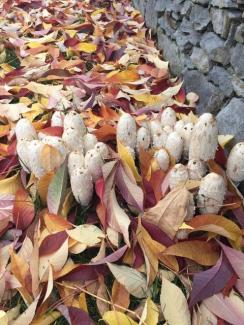
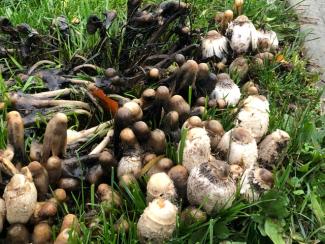
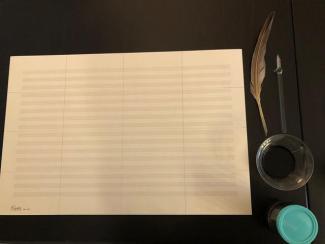
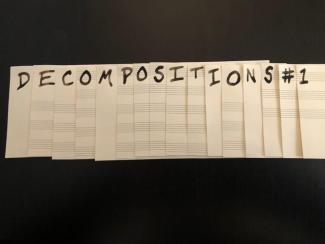
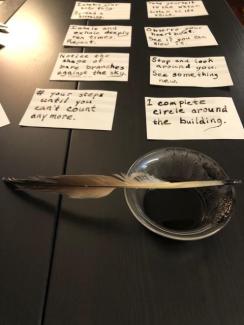
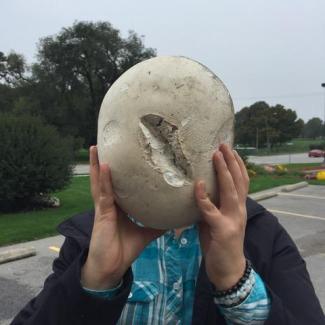
Catherine Laub is a PhD student in musicology at UBC, living and working on the traditional and unceded territories of the kʷikʷəƛ̓əm (Kwikwetlem) and xʷməθkʷəy̓əm (Musqueam) peoples. She is also a singer, composer, producer, teacher, and mushroom forager. Her practices of creation and consumption reflect a collection of positionalities, including: queer, feminist, antiracist, transnational, and settler.